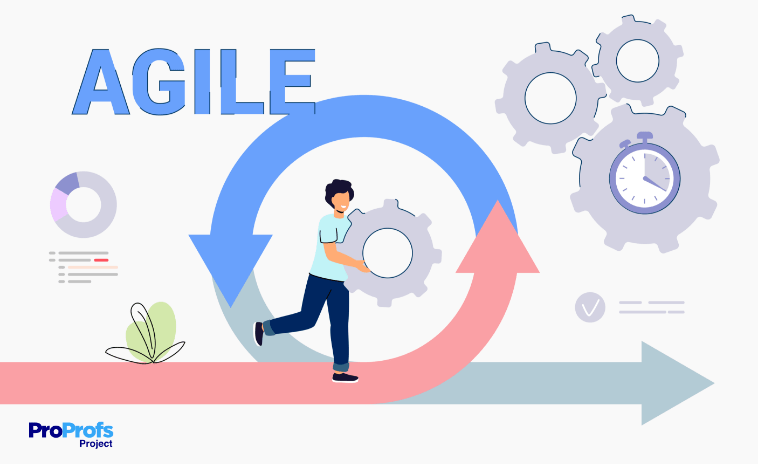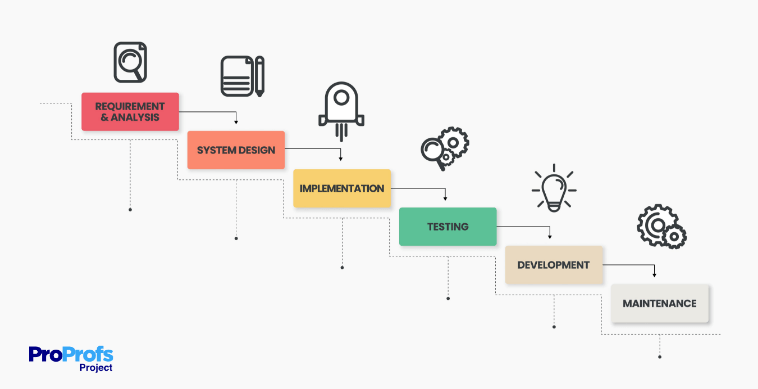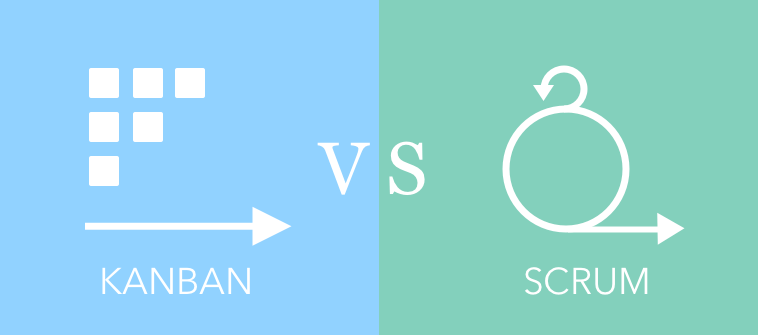As a project manager, you make some tough decisions for your projects. How many resources are required to complete the deliverables? What should be the project timeline? Which evaluation criteria should be used to determine a project’s success?
Deciding which project management methodology to follow for your projects is one of them.
A methodology forms the backbone of your project management practice. It helps establish a clear structure of project execution. It also helps standardize processes and tread a well-organized plan of action.
In this blog, we’ll delve into the two main types of project management methodologies — Agile and Waterfall. We’ll look at their pros and cons and also analyze agile vs waterfall in detail.
What Is Agile Methodology?
Agile project management refers to an iterative approach to managing projects. This means that a project is run by continuously adapting to incoming client requirements.
A project is carried out in short phases called sprints. These sprints have a fixed time duration, each defining the deliverables that are to be achieved at the end. The time duration can be anywhere between two to four weeks long.

Team members work on the pre-defined sprint deliverables and send them for testing soon after. Thus, in agile methodology, team members continuously send deliverables and seek feedback that they can incorporate right away.
If, as per the feedback, you have to make project changes, the manager begins adjusting team schedules. This is done to develop a new workflow that allows team members to start addressing the feedback immediately. Overall, agile project management is a flexible way to deliver desired outcomes.
The agile project management methodology boasts different flows of its development. Some of them are:
- Kanban
- Scrum
- Extreme Programming
- Agile Unified Process
- Lean Software Development
To sum up, adaptability is at the core of agile project management processes. It helps integrate the project changes and deliver projects that perfectly sync with client requirements.
Principles of Agile Project Management Methodology
An agile project management methodology follows the following principles:
✅ Adaptability – Agile projects involve adapting to evolving project requirements quickly.
✅ Customer involvement – The agile project involves close collaboration between the development team and the customer as the project is constantly evolving, keeping customer feedback a priority.
✅ Teamwork – Agile project development follows a team-based approach. The team must continuously adopt best practices to be more effective at work.
✅ Time – Agile projects are carried out within very short intervals of time, called sprints.
✅ Sustainability – In agile methodology, you must place emphasis on the sustainable pace of project execution, one that can be followed across various projects.
✅ Testing – Testing is done after every iteration when working with agile project management methodology.
✅ Stakeholder motivation – People working on the project must be motivated to approach new changes head-on. They must also give frequent suggestions for better outcomes.
✅ Face-to-face discussions – Prefer to discuss daily work and tasks face-to-face. Face-to-face interaction enables stronger collaboration and enhanced productivity.
✅ Use a functioning product as the primary measure of progress – You must measure progress by checking how much the product is actually working.
✅ Continuous improvement – The product should be continuously improved to be designed well.
✅ Simplicity is at the core of agile projects – Agile projects are not complicated. Simple software that delivers value is what we should aim for.
✅ Self-organizing teams – Teams that self-organize lead valuable products to the finish line.
Read More: Agile Planning: What Is It & How You Should Do It
Pros & Cons of Agile Project Management
Let’s look at the pros and cons of agile project management.
The pros of agile project management methodology are:
- Superior quality projects – In agile project management, teams regularly test their products and send them to clients for feedback. Since clients are involved closely with how the final product turns out, the product is bound to be of high quality, thus confirming the client’s expectations.
- Better control – Project managers have better control over each stage of the project. Each iteration is run with proper quality control, tweaking processes whenever necessary.
- Client-focused – Since clients are involved at every stage of the development process, it means that project outcomes align with what they expect in the end. Also, this gives them a sense of ownership owing to their active participation in product development.
- Identify problems early – When you go step by step in agile project management, you dodge potential problems and accomplish each stage in sync with desired outcomes. This means that the final product has a better possibility of resulting in the expected output since you could achieve all previous iterations perfectly.
- Reduced risk – Risk is low while working in iterations. This is because you handle a smaller unit of a larger product. Thus, you are better able to predict and mitigate risks that can potentially impact that specific iteration.
- Increased flexibility – Since projects are managed in sprints, it allows team members to improve their products continuously. So, if they face a challenge and they wish to customize their workflows, agile project management gives team members the flexibility to adapt to new workflows and practices head-on.
The cons of agile project management methodology are:
- Not suitable for small projects – In agile, you divide a project into smaller units for simplified management. However, for a small project, it is difficult to divide it into smaller fragments when you can execute the project in one go.
- Uncertainty – For agile projects, the end result is often unknown. The final outcome comes into the picture as you accomplish its various iterations.
- Communication issues – Collaboration is paramount while handling agile projects. This is because team members need to constantly interact with each other and ideate the next plan of action. If communication falters, your project may suffer.
- Messed-up client handling – Clients have a crucial role to play in agile project development. They are involved at every stage of the iteration. However, their over-involvement in the process can mess up a lot of things. It can lead to rapid changes in the deliverables, more than what is feasible for the organization. For best results, it is recommended to define the scope of client involvement during each iteration.
- Needs a Scrum Master – A Scrum master is responsible for making all the important decisions for the agile project. In case they are unavailable, it hinders fast response to required sprint changes.
- Cost: Agile methodology requires regular testing, workflow creation, readjustment, etc. Thus, the cost of implementing an agile solution is more than that of implementing a waterfall methodology
Checkout: 17 Best Agile Project Management Tools in 2022
What Is Waterfall Methodology?
The waterfall methodology refers to a linear approach to managing projects. This means that a project is run in one single endeavor.
Project managers plan a project comprehensively. This plan elaborates how the project will move forward step by step. It details the tasks, who will work on them, and by when you must complete them.

In Waterfall project management methodology, the sequence of tasks is fixed. You can only move on to the next task once you have accomplished the previous one. Also, you cannot hop back to a previous task to make some changes. If you intend to make changes to a previous task, you must start the entire project from scratch.
To sum up, in waterfall project management, you execute the project exactly as planned. And yes, the customer comes into the picture only twice during project execution. Once when you require them to provide you brief. And second, when you deliver them the final product.
Following are some of the stages while following a waterfall project management methodology:
- Documenting project requirements
- Designing
- Test codes and units
- Test for system acceptance
- Fix issues
- Deliver final product
Principles of Waterfall Project Management Methodology
A waterfall project management methodology follows the following principles:
- Distinct, Sequential Phases – Waterfall projects move forward in strict sequential phases. This means that you cannot go back and forth to different phases to make changes. You must commence the project from the beginning to make a change.
- Low customer involvement – Waterfall allows very low involvement of customers. You approach a customer once, in the beginning, to request a brief and once at the end while delivering the final product.
- Strong documentation – Since everything is planned at the beginning of the waterfall methodology, the documentation is quite strong and comprehensive. It details how the team plans to achieve the goals, which tasks are a priority, what is the timeline for each task, and more.
Read More: 12 Critical Project Management Principles
Pros & Cons of Waterfall Methodology
Let’s look at the pros and cons of waterfall methodology.
The pros of waterfall project management methodology are:
- Crystal-clear plan of action – With waterfall project management, you work with a clear-cut plan of action. Tasks, responsibilities, priorities, dependencies, and timelines are fixed and cannot be changed. It also enables you to lay out a clear documentation of how you achieved your goals and objectives.
- Predictable outcomes – In waterfall, you can predict project outcomes at the beginning. This is because you have a detailed schedule and scope that has to be followed, leading to the desired results. This also enables you to deliver the project faster.
- Perfect for recurring projects – If you have projects that are recurring in nature, then waterfall is the best methodology to follow. You simply have to establish the workflow, and the project can move as expected.
- Easy monitoring of projects – Since tasks are conducted in a definite manner, it becomes easy to stay on top of work progress. There are no discrepancies or things that may slip your attention. Everything is pre-defined and work goes on smoothly.
The cons of waterfall project management methodology are:
- Not for larger projects – Waterfall project management methodology is not apt for larger projects. Why? Because large projects have complex processes with overlapping tasks you must complete concurrently. In large projects, resources, timelines, priorities, and dependencies are set on a larger scale that a waterfall methodology cannot sustain for long.
- Difficult to make changes – In Waterfall, once you have laid out the plan of action, it is difficult to incorporate any changes. If things do not go as planned and you need to change something, you have to start the entire project from the very beginning.
- May disappoint customers – Customers are not involved too much in Waterfall projects so there is less scope to ask them for feedback during the project. This means that you can only go to the customer with the final product. So what’s wrong? The problem is that the final product may not match the customer’s expectations. This leads to dissatisfied customers.
- Costly – If a product did not turn out as expected, re-doing it may escalate its costs significantly. This is because to rectify the project, you have to begin its development right from the beginning, which is both time-consuming and costly for the business to handle.
Agile vs Waterfall Methodology: Detailed Comparison
Now that you understand what agile and waterfall are and the difference between agile and waterfall project management, let’s move on to understanding waterfall methodology vs agile methodology.
Below is a detailed layout of agile vs waterfall methodology. Take a look!
| Project Traits | Agile Project Management Methodology | Waterfall Project Management Methodology |
| Approach | Follows an Iterative Approach. | Follows a Linear Approach. |
| Project division | Agile projects are divided into smaller sprints. | Waterfall projects are divided into stages. |
| Well-defined project outcomes & timelines | Final outcomes evolve as you move across the project’s lifecycle. Timeline is not fixed. | Project outcomes and timeline is fixed right at the start. |
| Customer involvement | Customer is actively involved during project execution. | Customer’s involvement is minimal – once for attaining the brief, next for delivering the project in the end. |
| Change management | Changes are embraced at the end of each sprint. Feedback is incorporated immediately. | Changes cannot be made until the project is commenced from scratch. |
| Team coordination | Team coordination is integral to an agile project. | Team coordination is important but limited. |
| Flexibility | Project execution is very flexible, open to changes throughout. | Project execution is quite rigid, adhering to the set plan of action. |
| Result review | Projects are reviewed after each sprint. | Projects are reviewed only at the end. |
| Testing | Testing is done after each sprint. | Testing is done after the project is developed in the end. |
| Requirement preparation | Requirements are prepared almost every day. | Requirements are prepared right at the beginning of a project. |
| Customer feedback | Customer feedback is requested after each sprint. | Customer feedback is requested right at the end of a project. |
| Ideal for? | Ideal for projects with evolving requirements. | Ideal for projects with definite requirements. |
Looking at the table, you can see what constitutes agile and waterfall project management. It gives you better insight into which methodology will work best for your projects.
When to Use Agile Methodology in Project Management?
Are you wondering when to use agile methodology in project management? Don’t worry! We have everything sorted.
You must consider some factors before selecting agile as your project management methodology. These factors are:
Project requirements – Analyze what your project requirements are. Does the project have a definite timeline? Are its deliverables fixed from the start? If the answer to these questions is not in the affirmative, you can certainly go ahead with agile project management methodology.
Changes during project execution – Do your project’s requirements change as the project moves through different stages? If yes, agile project management is right for you. This is because, in agile, teams instantly adapt to evolving requirements and deliver projects as desired.
Customer Involvement – Do you prefer to simply receive the brief from the customer and deliver expected outcomes, or do you prefer frequent customer involvement while working on projects? If your answer is the latter, then agile is what will complement your needs.
Budget Constraints – If you’re tight on your budget, going forward with waterfall is your best bet as things move strictly as planned. Agile projects constantly evolve, and that might exceed your budget a little.
Your final choice of selecting agile as your project management methodology depends on these key factors. Analyze each aspect of your project and select the methodology that complements your project requirements best.
Read More: Agile Software Development Life Cycle (Ultimate Guide 2022)
Drive Success with the Right Project Management Methodology
By now, you must have a fair idea about the difference between agile and waterfall project management methodologies. Like any other practice, the two methodologies also come with their set of pros and cons. You can analyze how their given set of pros and cons will affect your management practice.
Also, you must have understood when to use agile vs when to use waterfall. This way, you will be able to select and implement the best project management methodology for your business.
Adopting a robust tool like ProProfs Project can help you create clear workflows for your projects. You can either start from scratch or choose a template to get started within minutes. Using the tool, you can assign users to tasks, and set priorities, and task dependencies. Overall, the tool has everything you need to establish transparency and collaboration within your teams.
FREE. All Features. FOREVER!
Try our Forever FREE account with all premium features!





